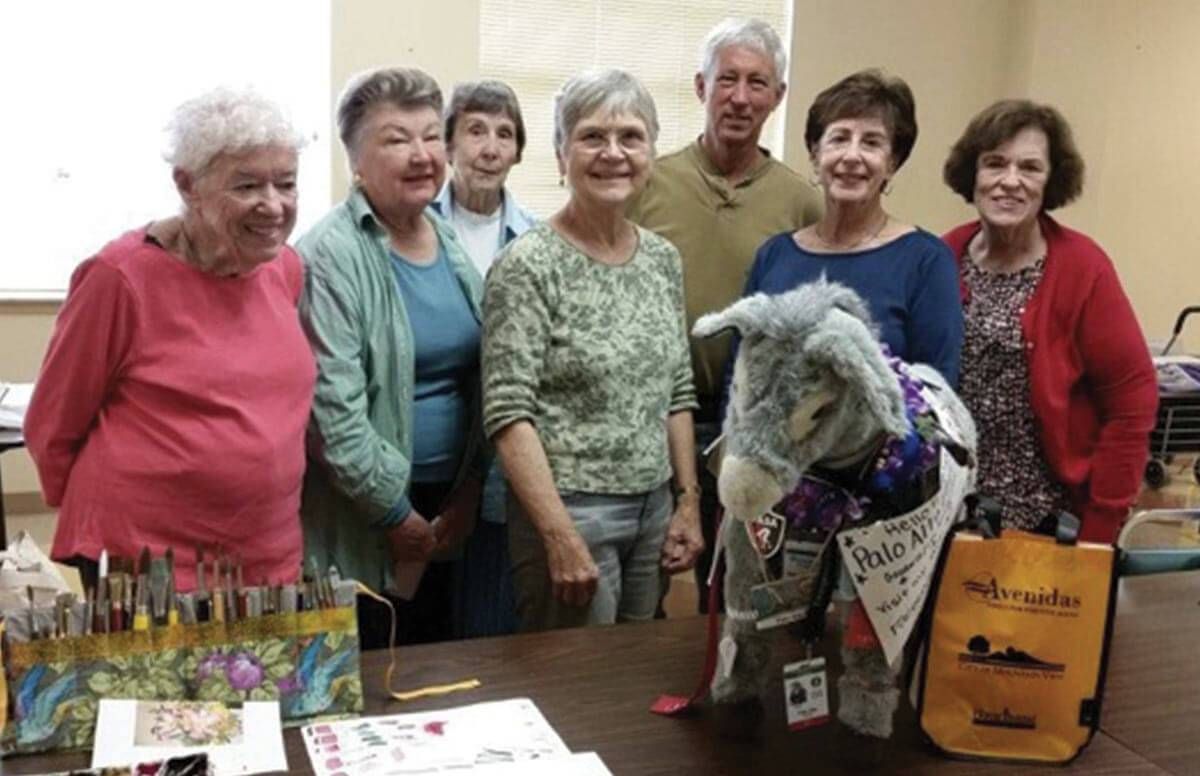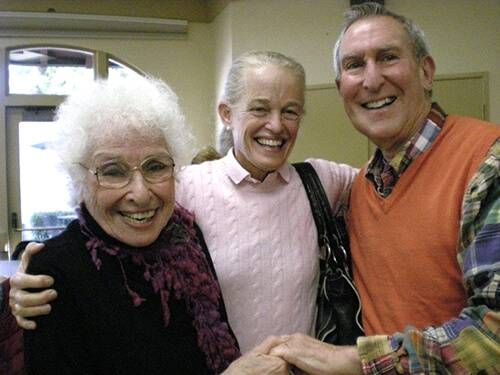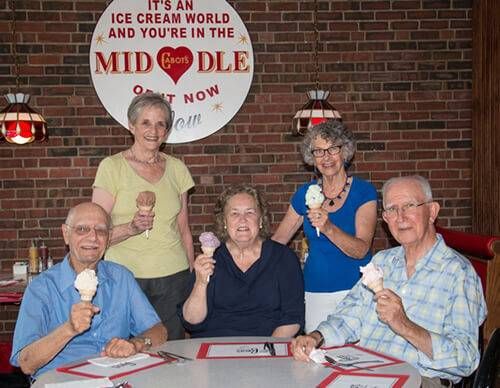How Will The Villages Age With Their Members?
Older residents need more help, but their neighbors are also aging
As grassroots organizations of older adults, The Villages are based on the idea of neighbors helping neighbors. But having been around for 15 years, the national Village movement faces a new challenge. These communities are wrestling with the limits of neighborly help when it comes to members' increasing physical challenges or cognitive loss.

"Villages still think of their members as friends, not as clients, but they're acknowledging there are these transitions in life you're going to go through," says Natalie Galucia, director of the national Village-to-Village Network. "They're realizing if they really do want to take care of one another, they're going to have to address those changing needs."
Villages are groups of neighbors who band together to form a membership organization. They typically pay an annual fee in exchange for basic communal services like transportation and yard work. Volunteers — either other members or people outside of the organization — offer their services.
We Know What’s Coming
"We as a Village are facing that challenge right now," says Esther Gillies, a member of Pasadena Village in California. "Most of us are healthy and mobile, but we know very well as we move into advanced age, we have more problems with memory loss, with fragility, with hospitalizations, with the need for more support on a regular basis."
The idea behind Villages is that with support from those in their communities, many people can remain in their homes far longer than if they were isolated. Typically, members call one central number to request nonmedical help from volunteers, such as rides, temporary pet care or meals and vetted handyman services. Most Villages also organize social events, wellness activities and volunteer opportunities for members.

Capitol Hill Village (CHV) in Washington, D.C. — among the largest, with 435 members — was one of the first to prepare for long-term care challenges. Four years ago, says CHV Director Molly Singer, just three members needed "care services" (such as care management or medical advocacy). Today, 79 do. They need a mix of long-term care, intense temporary care after a hospitalization, crisis management and referrals. To manage those needs, CHV has two social workers on staff and two social work interns, a high level of service that most Villages do not (or cannot) provide.
What Are The Villages' Limitations?
CHV has developed a raft of programs to support its frailest members, including partnering with a medical house-calls practice. There are also trained volunteers who check in weekly with homebound members to stay on top of emerging issues, and others who act as medical advocates, accompanying members to doctor appointments.
"The challenge is, Villages are Villages, they're not nursing homes," says Singer. "We're here to support and extend the ability of people to live independently — and we can't do it forever."
She cites an example, a couple where one has dementia and the other is on a respirator. Plus, they have two dogs. "No amount of reasonable support can enable them to live independently," she says. "That's the reality."
Finding the right balance in its membership, though, is tough. "It's a hotly debated issue," says Gillies. "Some say we have to recognize the limits of the capacity of the Village. Others say we have an obligation to our members.'"
Pasadena is one of many Villages that have turned to CHV for advice. CHV now holds a monthly conference call for Villages on topics such as defining the Village's boundaries for providing care, the ethics of working with members' families, and assessing mental and physical decline.
A Critical Role for Care Management
Avenidas Village in Palo Alto, Calif., has 415 members whose average age is 80 —three years older than when the Village was founded in 2007.
Not only do many of the original members now need more help, but the Village is attracting new members of a similar age, instead of people in their 60s and 70s. "The most significant way we bring people in is through our present members," says the Village's program director, Vickie Epstein.
Avenidas Village was launched at the request of seniors who attended community center programs offered by Avenidas Resources for Positive Aging, a local nonprofit. As a result, the Village is part of Avenidas Resources, which also includes Avenidas Care Partners, a program offering geriatric care management and other services.
While the Village provides temporary care management after a hospital stay, Avenidas Care Partners or a private vendor handle more chronic, complex needs.
"I may refer some to the adult day center or to home care or for legal and financial help, with a goal of keeping everybody at home as long as possible," says Paula Wolfson, manager of Avenidas Care Partners. But at some point aging in place becomes "aging in isolation," she says, and it's best for the person to move to assisted living, hire in-home help, or live with family.

Pasadena Village uses skilled volunteers and a social work intern to make initial assessments of members with growing needs. "When we have a particularly complicated situation, the executive director will bring that to the team and we brainstorm how will we respond to this," says Gillies, who serves on the services assessment team. "Our purpose is to provide support to our office staff in responding to requests from our members."
Forging Relationships with Health Care Providers
Newton at Home, a Village in Newton, Mass., found a way to gain members and, at the same time, ease re-hospitalization rates for older people.
In 2012, Medicare began penalizing hospitals for readmissions within 30 days. So Maureen Grannan, a registered nurse who is executive director of Newton at Home, saw an opportunity and approached Newton-Wellesley Hospital with a proposal. The hospital would become a corporate member of the Village for $1,800. For that, the hospital receives 30-day memberships in the Village for 10 patients when they are discharged from the hospital. (After 10 patients use the memberships, the hospital can renew its contract for another $1,800.)
"I go over and make a home visit to make sure they don't have more needs than we can handle," says Grannan. "We do a daily phone call, look at their follow-up doctor appointments and labs to see if they need transportation, make sure they have food and prescriptions, or help with getting their [trash] barrels [to the curb] — anything they might not be able to do."
At the end of 30 days, those patients can choose to pay for continued Village membership. Almost all have done so, and none has been re-hospitalized.
Meeting More Needs
Now, Newton at Home is piloting a program to more proactively prevent hospitalization for at-risk individuals. Grannan has worked with a care manager at an internist's office to identify two people with multiple and chronic issues, including family estrangement and substance abuse — the kind of people who tend to go to the emergency room repeatedly, often because they are alone and frightened. The Village offers them subsidized memberships and each is assigned a regular volunteer to go on weekly walks or lunch outings. "It's really made an impact on their lives," she says.
"Villages need to be more focused on elevating the entire conversation about long life, rather than just thinking about day-to-day interactions," says CHV's Singer. "I like to think we do both." She wants to see a grassroots response to the aging population and see what the economic and societal responses are. Without that, she says, the Village model is not sustainable. It will grow top heavy, with more seniors than people to support it. "So that is one of my focuses — really expanding how we're talking about this," notes Singer.

